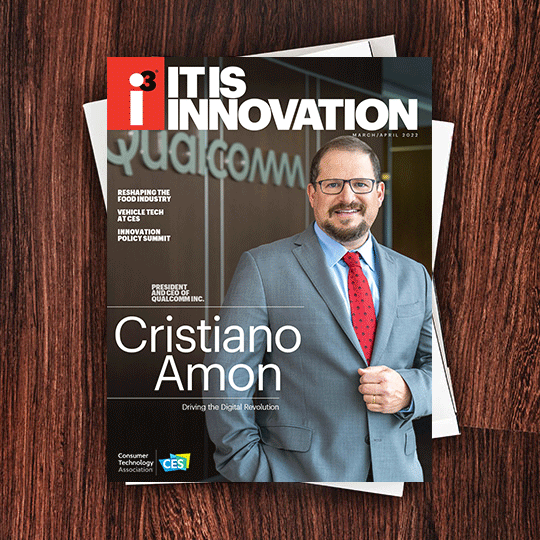The future of the office is going to be pretty flexible.Daniel O’Brien, HTC VIVE
HTC VIVE
VIVE Sync is a VR solution for hybrid work collaboration. It is not exclusive to VR hardware — it can also be accessed on phones, tablets, laptops and desktops. Avatar features, such as lip syncing, shaking hands and high fiving, help create immersive interactions between coworkers and feel more authentic than talking to a static avatar or picture. VIVE Sync has all the features of video calls, but also includes features such as 3D model sharing and spatial audio. A technology like VIVE Sync will be key to remote and hybrid collaboration. “The future of the office is going to be pretty flexible,” Daniel O’Brien, general manager, HTC VIVE, says. “If anything, COVID forced us to be in this hybrid environment, and it’s going to continue because the technology is taking us there regardless.”
Owl Labs
Owl Labs created an all-in-one hybrid meeting device called the Meeting Owl Pro that has a microphone, speaker and 360-degree camera, which allows remote meeting attendees to see a panoramic view of the room. The Meeting Owl Pro identifies who is speaking, focuses on them, and if multiple people are talking, it puts them side by side on the screen to help the remote worker follow who is speaking. As Max Makeev, co-founder of Owl Labs, explains, these features benefit the remote employee by “helping that person feel connected to the conversation.” This is key to hybrid collaboration and ensuring that all members of the team are included.
These innovations from CES 2022 are solutions to the future of hybrid work. Employers should plan to incorporate them in the workplace to ensure equal focus on employees that are onsite and those working remotely to build a sense of community and belonging among teams.

I3, the flagship magazine from the Consumer Technology Association (CTA)®, focuses on innovation in technology, policy and business as well as the entrepreneurs, industry leaders and startups that grow the consumer technology industry. Subscriptions to i3 are available free to qualified participants in the consumer electronics industry.